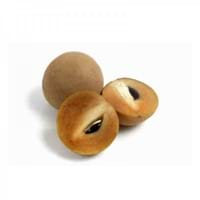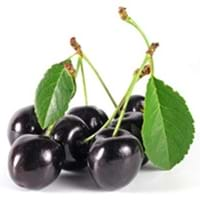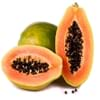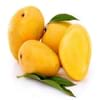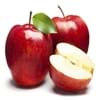Health Benefits
Anti-inflammatory properties, Arthritis treatment, Regulates Blood Sugar, Unknown
Anti-aging benefits, Anti-inflammatory properties, Arthritis treatment, Cancer prevention, Helps body to rest and sleep, Lower blood pressure, Prevents diabetes, Prevents strokes, Reduces risk of heart disease
General Benefits
Boosts immune system, Controls blood sugar levels, Digestive aid
Fights against infections, Fights Tooth Decay, Helps in weight loss, Relieves pain, Treatment of migraine
Skin Benefits
Nourishes skin, Protects skin from oxidative stress
Anti-aging benefits, Fairness, Hydrates skin, Prevents skin cancer, Skin repair, Treatment of acne
Hair Benefits
Prevents hair loss, Promotes longer and healthier hair, Regulates hair growth
Cure for hair loss, Increasing hair volume, Prevents hair loss, Strengthening of hair
Allergy Symptoms
Asthma, Red rash, Swelling of mouth, tongue or lips
Abdominal cramps, Anaphylaxis, Diarrhea, Hoarseness, Itchy eyes, Nausea, Pollen allergies, Sore eyes, Vomiting, Watery eyes, Wheezing
Side Effects
Diarrhoea, Vomiting
High doses of black cherry bark can be poisonous and even fatal.
Lactating Women
Yes
Not Available
Best Time to Eat
As a snack in the late afternoon
Best if taken as a breakfast (or empty stomach), Don't eat after meal, Morning time (before lunch)
Vitamin B1 (Thiamin)
Not Available
Vitamin B5 (Pantothenic Acid)
Vitamin B6 (Pyridoxin)
Not Available
Vitamin B9 (Folic acid)
Not Available
Vitamin C (Ascorbic Acid)
Not Available
Phytosterol
Not Available
Calories in Fresh Fruit with Peel
Calories in Fresh Fruit without Peel
Not Available
Not Available
Calories in Frozen Form
Not Available
Calories in Dried Form
Not Available
Calories in Canned Form
Not Available
Varieties
Bush Table Queen, Heirloom Table Queen, Festival Hybrid, Early Acorn Hybrid, Table Ace, Ebony and Cream of the Crop
alabamensis, capuli , eximia and hirsuta
Seedless Variety
Not Available
Yes
Color
Dark green, Green-yellow, Orange green
Black
Inside Color
Not Available
Maroon
Taste
Sweetish
Sweet-Sour
Origin
Central America, North America, Unknown
North America
Soil Type
Well-drained
Not Available
Climatic Conditions
Cold, Sunny
Cold
Facts about
- It was named as Acorn Squash for its resemblance to a large ribbed acorn.
- It is said that squash was being grown in Mexico as long as 10,000 years ago.
- It was the first food cultivated by native American Indians.
- Black cherry is deciduous tree that belongs to the family of roses.
- Some foods made from Black Cherry fruit include jelly and wine.
- Inner bark of black cherry is used in the manufacture of cough syrup.
Spirits
Not Available
Yes
Cocktails
Not Available
Yes
Top Producer
China
Turkey
Other Countries
Egypt, India, Iran, Italy, Mexico, Russia, Turkey, Ukraine, United States of America
Austria, Bulgaria, Chile, China, France, Greece, Iran, Italy, Macedonia, Poland, Romania, Russia, Serbia, Spain, Syria, Ukraine, United States of America, Uzbekistan
Top Exporter
India
Turkey
Botanical Name
Cucurbita Pepo
Prunus Serotina
Synonym
Winter Squash
wild black cherry, rum cherry and mountain black cherry
Subkingdom
Tracheobionta
Tracheobionta
Division
Magnoliophyta
Magnoliophyta
Class
Magnoliopsida
Magnoliopsida
Subclass
Dillenhidae
Rosidae
Order
Cucurbitales
Rosales
Family
Cucurbitaceae
Rosaceae
Generic Group
Not Available
Cherry
Difference Between Sapota and Black cherry
We might think that Sapota and Black cherry are similar with respect to nutritional value and health benefits. But the nutrient content of both fruits is different. Sapota and Black cherry Facts such as their taste, shape, color, and size are also distinct. The difference between Sapota and Black cherry is explained here.
The amount of calories in 100 gm of fresh Sapota and Black cherry with peel is 40.00 kcal and 63.00 kcal and the amount of calories without peel is Not Available and Not Available respectively. Thus, Sapota and Black cherry belong to and category.These fruits might or might not differ with respect to their scientific classification. The order of Sapota and Black cherry is Cucurbitales and Rosales respectively. Sapota belongs to Cucurbitaceae family and Black cherry belongs to Rosaceae family. Sapota belongs to Cucurbita genus of Pepo species and Black cherry belongs to Prunus genus of P. serotina species. Beings plants, both fruits belong to Plantae Kingdom.
